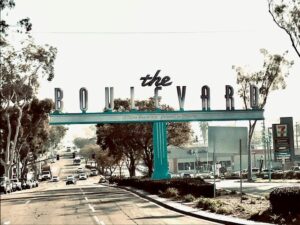 El Cajon Blvd
El Cajon Blvd
El Cajon Boulevard / Photo by Anita DeFrancesco/ Author
Daybreak along El Cajon Boulevard can be a rude awakening and a reminder of the road’s most illicit reputation.
El Cajon was a hub for prostitutes. Donna Gentile was one of the girls who frequented this area. Women in short skirts and heels waiting for the next john, so to speak.
See links for the full article…by Keegan Kyle Oct, 8, 2009

Please contact Keegan Kyle directly at keegan.kyle@voiceofsandiego.org and follow him on Twitter: twitter.com/keegankyle. And set the tone of the debate with a letter to the editor.
https://www.voiceofsandiego.org/topics/public-safety/why-el-cajon-blvd-is-a-prostitution-hotspot/
Where Was the “Stand Your Ground Law” By Al_Hajj_Frederick_Minshall »
